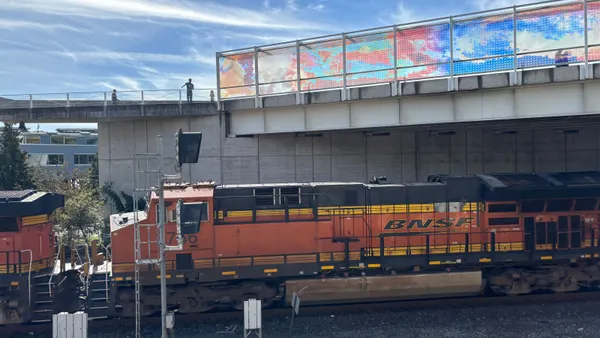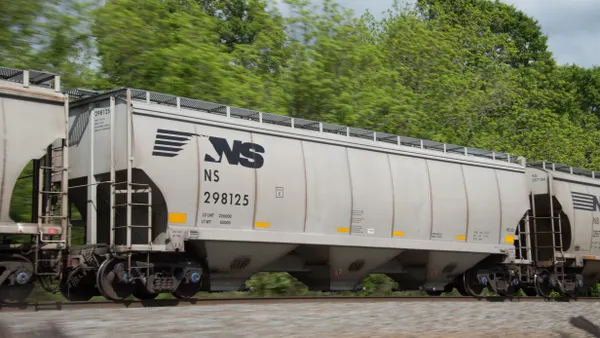Dive Brief:
- Though Norfolk Southern executives insist the railroad is making the gains in productivity and efficiency generally associated with precision-scheduled railroading (PSR), analysts expressed concern that the railroad is falling behind its peers on an earnings call Wednesday.
- Norfolk Southern decreased terminal dwell by 32% while increasing train speed by 16% year-over-year in the third quarter. But it's operating ratio (OR) ended the third quarter at 64.9%, up from 63.6% in the second quarter, and CEO Jim Squires said the railroad would not reach its goal of 100 basis points of OR improvement this year.
- "We have been aggressively reducing our resources to meet our productivity goals," said COO Mike Wheeler. The railroad is currently in Phase II of its 3-stage PSR plan, which is focused on consolidating trains to increase cars online while decreasing crew starts and taking a hard look at yard operations. Phase III, set to begin somewhere near the end of the year, will consist of remodeling the network.
Dive Insight:
Though Norfolk Southern is confident it will reach a sub-60% OR by 2021 as planned, analysts were incredulous as to why the railroad is not posting incremental OR progress. While rail volumes are down across railroads and freight categories, other Class I's have been able to leverage their PSR progress to increase revenue despite doing less business.
"We are also going to try to grow even as we implement PSR," the CEO said in February when announcing Norfolk Southern's approach to PSR.
That optimism lasted into the second quarter when Squires said 2019 intermodal volumes would exceed 2018's record numbers. Now that optimism has disappeared. Norfolk Southern's revenue was down 4% year-over-year in the third quarter (intermodal revenue down 5%) on top of a 6% overall volume loss .
"The volume picture has changed rather dramatically since we issued the three-year plan in February," said Squires. With falling volume, the railroad is cutting headcount, down 3,200 by the end of the year, and reducing locomotives while increasing trains speeds.
"We are determined to achieve the 60% OR goal by 2021 in any foreseeable revenue environment, including the one that we are in now," Squires said.













